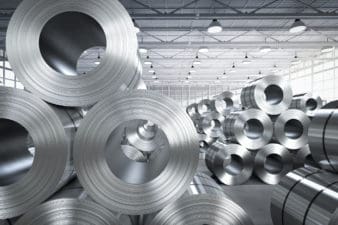Gold has pulled back in recent days because of easing geopolitical tensions in the Middle East and an increasingly positive global economic outlook. While risks are declining, there is every likelihood that the simmering tensions in the crisis-prone Middle East could come to a boiling point at short notice once again. That would trigger another gold rally, particularly in a global political and economic environment riven with uncertainty.
This makes now the time for investors to weatherproof their portfolios against uncertainty by bolstering their exposure to gold miners. Previously, I have expressed a preference for higher-risk junior gold miners, because they offer greater potential upside, but senior miners Barrick Gold Corp. (TSX:ABX)(NYSE:ABX) and Goldcorp Inc. (TSX:G)(NYSE:GG) offer a lower-risk alternative. This is because they have stronger balance sheets and proven mining operations.
Let’s take a closer look to see which of the two is the superior investment.
Now what?
For the year to date, Barrick’s shares have plummeted by 12%, whereas Goldcorp’s surged by 10%. This can be attributed to the market factoring some issues that have sharply impacted Barrick’s operations, whereas Goldcorp appears to have finally ironed out the issues, which, up until the end of 2017, were affecting its output and earnings.
Barrick’s full-year 2017 production fell by 3% year over year to 5.32 million gold ounces. This was because of the sale of the miner’s 50% interest in the Veladero mine, lower production from its Acacia mine triggered by a conflict with the government of Tanzania, and a ban on exporting concentrate in the African nation.
Disappointingly, Barrick’s preliminary first-quarter 2018 gold production figures were almost 22% lower than the previous quarter.
It is these factors which were responsible for the sharp decline in Barrick’s share price.
Nevertheless, the sale of the 50% interest in Veladero bolstered Barrick’s coffers, freeing up capital that could be directed to other projects or used to strengthen its balance sheet. In October 2017, the company reported that it had resolved the issues at the Acacia mine, which means gold output from that operation should improve over the course of 2018.
Barrick has consistently reported low operating costs, as evidenced by its 2017 all-in sustaining costs (AISCs), which came to US$750 per ounce of gold produced, well below the US$824 per ounce reported by Goldcorp, illustrating the quality of Barrick’s mining assets and the company’s superior profitability. Barrick also expects 2018 AISCs to be between US $765 and $815 per ounce, which are among some of the lowest in the industry. The lower end of that range is less than Goldcorp’s estimated AISCs of US$800 per ounce, indicating that Barrick’s operations have the potential to be more profitable.
However, Goldcorp’s production for 2018 is forecast to expand by 27% year over year, whereas Barrick’s is expected to drop by between 6% and 18%, indicating that Goldcorp is a better positioned to boost earnings in an operating environment where gold remain firm. Both miners have a solid pipeline of exploration and mine-development projects underway, highlighting that they can expand gold production over coming years as those projects come online.
So what?
Choosing between Barrick and Goldcorp is a difficult proposition. Each miner has proven operations, solid balance sheets, and a history of achieving their annual production and earnings guidance. If anything, the sharp decline in the value of Barrick’s shares in comparison the appreciation of Goldcorp’s makes it the better investment, because it offers greater value, especially once it starts reporting improvements in its operations.






